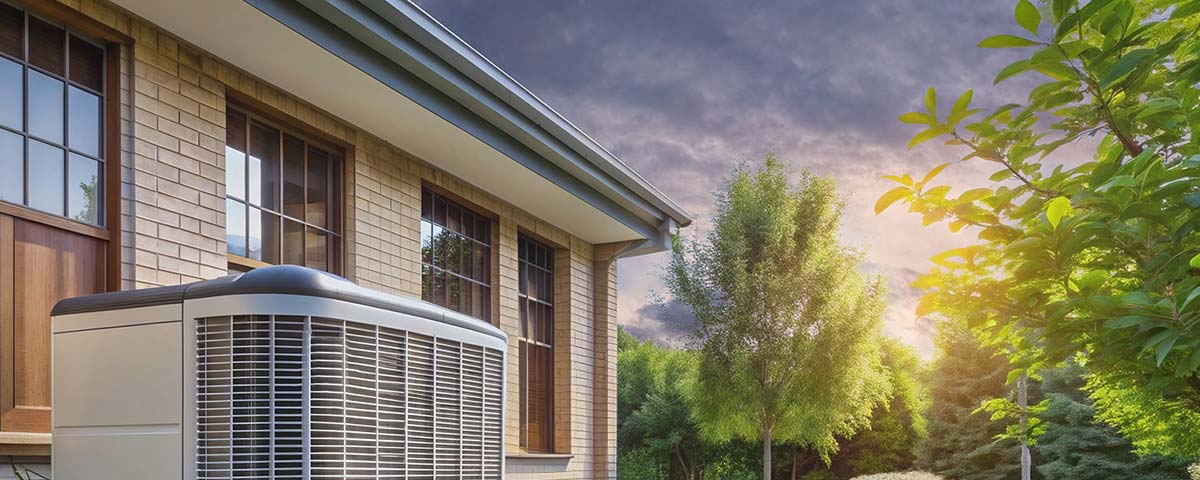If you live in the Southern U.S., you know that spring and summer bring more than just heat—they bring storms. From sudden downpours and damaging winds to hail and lightning strikes, severe weather is just part of life in our region. While you may already have a storm kit with flashlights and bottled water ready to go, don’t forget one of the most important systems in your home—your HVAC system.
Here’s how to protect it before, during, and after the storm.
✔️ Schedule an HVAC Tune-Up
Get your system inspected and serviced by a professional. Not only will it run more efficiently in the heat, but you’ll avoid the post-storm scramble to find a technician if something goes wrong. Consider joining the MAC Heating & Air Conditioning protection plan for priority service after a storm.
✔️ Install a Whole-Home Surge Protector
Spring and summer storms often bring intense lightning. A direct or nearby strike can fry your HVAC system’s circuits. Surge protectors help prevent costly damage.
✔️ Secure Your Outdoor Unit
Ensure your condenser is mounted on a concrete slab to prevent water intrusion. Install storm straps or even a protective cage to help keep it secure in high winds.
✔️ Trim Nearby Trees
Loose branches and overhanging limbs can become dangerous projectiles in strong storms. Keep the area around your outdoor unit clear.
🧹 Clear the Area
Pick up lawn chairs, tools, toys, or anything that could be blown into your outdoor HVAC unit.
❄️ Pre-Cool Your Home
Lower the temperature in your home to give yourself a buffer if the power goes out.
🔌 Shut It Down Safely
Once the storm is close, power down your HVAC system at the breaker—both indoor and outdoor units. This helps prevent electrical damage if there’s a power surge or outage.
🔒 Cover the Unit (Optional)
Use a tarp to protect the outdoor unit from flying debris or excessive rain—but make sure it’s tightly secured and removed promptly after the storm passes.
Look for any visible damage like fallen limbs, flooding, or debris around your HVAC unit. Avoid touching downed power lines.
⚠️ Flooded Unit? Call the Pros
If there was flooding or if anything looks off, call MAC Heating & Air Conditioning to assess the system before turning it back on.
🔁 Turn the System Back On (If Safe)
If there’s no visible damage or standing water, remove the tarp and flip the breakers back on. Listen for any unusual sounds that might indicate internal damage.
📞 Not Sure? Call Us
If your system isn’t cooling properly or you notice anything unusual, let our HVAC technicians take a look before minor damage turns into a major repair.
Need a pre-storm inspection, surge protection install, or post-storm repair? Call MAC Heating & Air Conditioning—we’re here to keep your home safe and comfortable, no matter what the forecast says.
Here’s how to protect it before, during, and after the storm.
Before Storm Season Begins
Start your prep early—well before the skies turn dark.✔️ Schedule an HVAC Tune-Up
Get your system inspected and serviced by a professional. Not only will it run more efficiently in the heat, but you’ll avoid the post-storm scramble to find a technician if something goes wrong. Consider joining the MAC Heating & Air Conditioning protection plan for priority service after a storm.
✔️ Install a Whole-Home Surge Protector
Spring and summer storms often bring intense lightning. A direct or nearby strike can fry your HVAC system’s circuits. Surge protectors help prevent costly damage.
✔️ Secure Your Outdoor Unit
Ensure your condenser is mounted on a concrete slab to prevent water intrusion. Install storm straps or even a protective cage to help keep it secure in high winds.
✔️ Trim Nearby Trees
Loose branches and overhanging limbs can become dangerous projectiles in strong storms. Keep the area around your outdoor unit clear.
When a Storm is on the Way
When the forecast calls for rough weather in the next few hours:🧹 Clear the Area
Pick up lawn chairs, tools, toys, or anything that could be blown into your outdoor HVAC unit.
❄️ Pre-Cool Your Home
Lower the temperature in your home to give yourself a buffer if the power goes out.
🔌 Shut It Down Safely
Once the storm is close, power down your HVAC system at the breaker—both indoor and outdoor units. This helps prevent electrical damage if there’s a power surge or outage.
🔒 Cover the Unit (Optional)
Use a tarp to protect the outdoor unit from flying debris or excessive rain—but make sure it’s tightly secured and removed promptly after the storm passes.
After the Storm Passes
🔍 Inspect the AreaLook for any visible damage like fallen limbs, flooding, or debris around your HVAC unit. Avoid touching downed power lines.
⚠️ Flooded Unit? Call the Pros
If there was flooding or if anything looks off, call MAC Heating & Air Conditioning to assess the system before turning it back on.
🔁 Turn the System Back On (If Safe)
If there’s no visible damage or standing water, remove the tarp and flip the breakers back on. Listen for any unusual sounds that might indicate internal damage.
📞 Not Sure? Call Us
If your system isn’t cooling properly or you notice anything unusual, let our HVAC technicians take a look before minor damage turns into a major repair.
Storm Season Peace of Mind Starts Now
Storm prep doesn’t stop with flashlights and batteries. With regular maintenance and a plan in place, your HVAC system can weather the wild Southern spring and summer.Need a pre-storm inspection, surge protection install, or post-storm repair? Call MAC Heating & Air Conditioning—we’re here to keep your home safe and comfortable, no matter what the forecast says.


